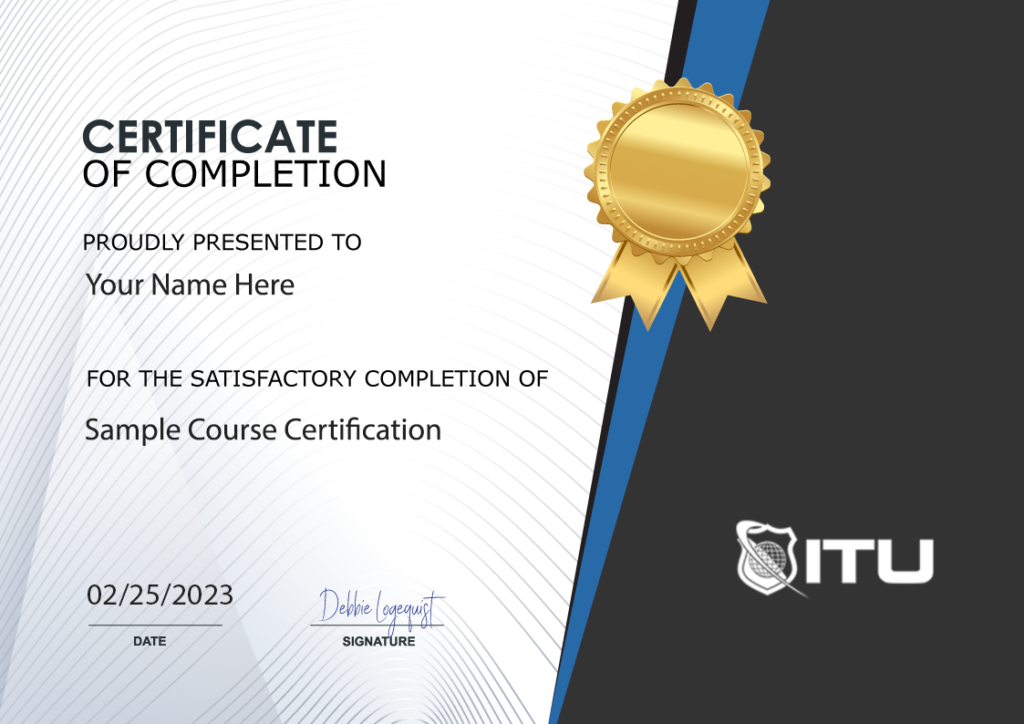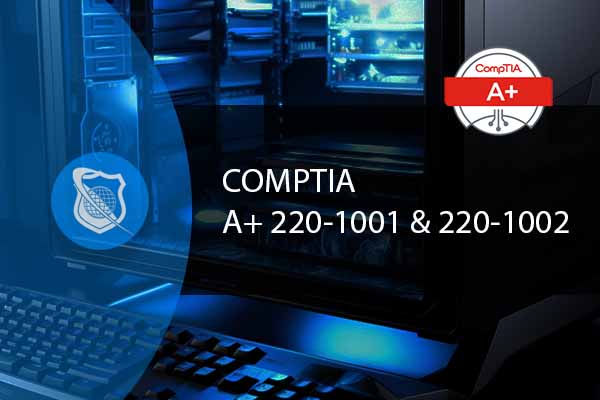CompTIA A+ 220-1001 Core 1 and 220-1002 Core 2
The CompTIA A+ 220-1001 & 220-1002 training for the Core Series covers topics that are growing in IT support, including expanded content on security baselines and a different way of assessing competence in operational procedures. ITU’s online learning environment is ideal for those with a busy schedule, offering convenience and flexibility, study when you want.
Included In This Course



Closed Captions



Certificate of Completion
There is a newer version of this course available: CompTIA A+ Course: 220-1101 Core 1 and 220-1102 Core 2
Master CompTIA Certification:12 Courses to Boost Your IT Career
CompTIA Mastery: 12 Courses to Take Your IT Skills to the Next Level. Want to be a top performer in the IT field? Look no further than our CompTIA mastery training program. With 12 courses covering all the essential CompTIA certifications, you’ll gain the knowledge and skills you need to succeed in any IT role.
Why is the CompTIA A+ Important?
CompTIA A+ is the gold standard for getting your foot in the door of IT – it’s an essential credential demanded by employers worldwide to identify exceptional and reliable technical support experts. What sets CompTIA A+ apart from other certifications? It requires professionals to prove their prowess through performance-based items, demonstrating that they can think quickly on their feet to tackle everyday IT tasks. Get certified with CompTIA A+, and give yourself a competitive edge when vying for IT management and IT jobs.
With A+ certification, students will be equipped with the proficiency to diagnose, solve and comprehend a broad spectrum of troubles from networking and operating systems all the way through mobile devices and security. On top of that, A+ ensures users can safely access vital data for their job – regardless of what device they are using.
Topics covered in this online IT Course
- Network security
- Device connectivity for desktop devices and end-user devices
- Cloud technologies and cloud file storage
- Devices security
- Hardware components
Current A+ Exam Objective
The CompTIA A+ 220-1001 & 220-1002 training for the new Core Series covers expanded content on growing parts of the IT support role including an expansion of baseline security topics and a different approach to defining competency in operational procedures. CompTIA A+ 220-1001 covers mobile devices, networking technology, hardware, virtualization, and cloud computing, and network troubleshooting.
The CompTIA A+ 220-1002 course covers Operating Systems, Security, Software Troubleshooting, and Operational Procedures.
The content for this training is divided into two separate full-length courses. When purchasing, you will have access to both courses. CompTIA A+ 220-1001 (Core 1) is 20 hours 39 minutes and CompTIA A+ 220-1002 (Core 2) is 16 hours 41 minutes.
How Much Can I Make With A CompTIA A+ Certification
This CompTIA A+ certification training is perfect for individuals beginning his/her career in the IT Industry and is best for people in positions such as a Support Specialist, Field Service Technician, Desktop Support Analyst, Help Desk Support.
The average salary for people with this certification can range anywhere between $40,000 to $70,000 based on current data from Indeed. Visit the Indeed website for current data related to some of the key positions and salaries related to CompTIA A+ certification.
This CompTIA A+ certification training is the most recent updated path to CompTIA A+ Certification and replaces the prior CompTIA A+ (220-901 and 220-902) course. For more information on CompTIA A+ certification, visit the CompTIA.org site.
Possible job roles and opportunities:
- Help Desk Technician
- Desktop Support Administrator
- Service Desk Analyst
- Help Desk Tech
- Technical Support Specialist
- Associate Network Engineer
- Data Support Technician
- Technical support roles
Key Term Knowledge Base: Key Terms Related to CompTIA A+ 220-1001 and 220-1002 Certification
The CompTIA A+ certification is a critical step for individuals pursuing a career in IT. It provides a comprehensive overview of core IT skills and knowledge. Familiarity with these terms is essential for anyone preparing for the CompTIA A+ exams or working in IT support and operations.
| Term | Definition |
|---|---|
| CompTIA A+ | A certification indicating proficiency in various IT operational roles and technical support. |
| Motherboard | The main printed circuit board in computers, holding many of the crucial components. |
| CPU | Central Processing Unit, the primary component of a computer that performs most of the processing inside the computer. |
| RAM | Random Access Memory, a form of computer data storage that stores data and machine code currently being used. |
| Hard Drive | A data storage device used for storing and retrieving digital information. |
| SSD | Solid State Drive, a storage device containing non-volatile flash memory, used in place of a hard disk. |
| Operating System | Software that manages computer hardware, software resources, and provides common services for computer programs. |
| Networking | The practice of interfacing two or more computing devices for the purpose of sharing data. |
| TCP/IP | Transmission Control Protocol/Internet Protocol, the suite of communications protocols used to connect hosts on the Internet. |
| VPN | Virtual Private Network, extends a private network across a public network, enabling users to send and receive data across shared or public networks as if their computing devices were directly connected to the private network. |
| Security | Measures used to protect a computer or computer system against unauthorized access or attack. |
| Malware | Malicious software designed to disrupt, damage, or gain unauthorized access to a computer system. |
| Troubleshooting | The process of diagnosing the source of a problem and resolving it, commonly used in IT and electronics. |
| BIOS | Basic Input/Output System, firmware used to perform hardware initialization during the booting process. |
| UEFI | Unified Extensible Firmware Interface, a specification that defines a software interface between an operating system and platform firmware. |
| Virtualization | The process of creating a virtual version of something, including virtual computer hardware platforms, storage devices, and computer network resources. |
| Cloud Computing | The delivery of different services through the Internet, including data storage, servers, databases, networking, and software. |
| Mobile Devices | Handheld computing devices, typically having a display screen with touch input and/or a miniature keyboard. |
| Printer | A device that accepts text and graphic output from a computer and transfers the information to paper. |
| Helpdesk | A service providing information and support to computer users, especially within a company. |
Understanding these key terms is essential for anyone studying for the CompTIA A+ exams or working in IT technical support roles.
Frequently Asked Questions About CompTIA A+ 220-1001 Core 1 and 220-1002 Core 2
What is the CompTIA A+ 220-1001 Core 1 and 220-1002 Core 2 course about?
The CompTIA A+ 220-1001 & 220-1002 training for the Core Series covers topics that are growing in IT support, including expanded content on security baselines and a different way of assessing competence in operational procedures.
What is the format of the training provided in this course?
The course is delivered through an online learning environment, making it ideal for those with a busy schedule. It provides convenience and flexibility, allowing you to study when you want. The course includes 76 training hours, 386 videos, 31 topics, and 830 practice questions.
Is there a trial period or any free access to the course?
Yes, you can start with a 10-day free access period with no obligation. This gives you access to this training along with over 2,500 hours of on-demand content provided by ITU Online.
Is there an updated version of this CompTIA A+ course available?
Yes, there is a newer version of this course available: CompTIA A+ Course: 220-1101 Core 1 and 220-1102 Core 2.
Why is the CompTIA A+ certification important?
The CompTIA A+ certification is considered the gold standard for starting a career in IT. It’s an essential credential demanded by employers worldwide to identify exceptional and reliable technical support experts.
What topics are covered in this course?
While the product page does not list all the specific topics covered in the course, CompTIA A+ generally covers areas such as networking, operating systems, mobile devices, hardware, virtualization, cloud computing, network troubleshooting, and operational procedures. Please contact ITU Online directly for a detailed course outline.
Proudly DisplayYour Achievement
Upon completion of your training, you’ll receive a personalized certificate of completion to help validate to others your new skills.
CompTIA A+ 220-1101 (Core 1) Course Content
Module 1 - Devices, Setups, and Installs
- 1.1 Introduction to the Course, Meet the Instructor
- 1.2 Appropriate Safety Procedures
- 1.3 PC Components
- 1.4 Guidlines for PC Disassembly
- 1.5 Motherboards
- 1.6 CPU Sockets
- 1.7 PCI Bus
- 1.8 Storage Bus (SATA and IDE)
- 1.9 Discussing PC Components
- 1.10 Common Connection Interfaces
- 1.11 Wired and Wireless Connection Standards
- 1.12 Install Peripheral Devices
- 1.13 Guidlines and Discussion for Installing Peripheral Devices
Module 2 - Displays and Multimedia Devices
- 2.1 Displays and Multimedia
- 2.2 Display Device Connections and Cables
- 2.3 Discussing Display Device Installation and Configuration
- 2.4 Troubleshoot Display Devices
- 2.5 Guidelines for Troubleshooting Display Devices
- 2.6 Discussing Display Device Troubleshooting
- 2.7 Install and Configure Multimedia Devices
- 2.8 Discussing Multimedia Device Installation and Configuration
Module 3 - Supporting Multiple Drive Types
- 3.1 Supporting Multiple Drive Types and Memory
- 3.2 Memory Types
- 3.3 RAM Types
- 3.4 Memory Modules
- 3.5 DIMM and SO-DIMM Technologies
- 3.6 Parity and ECC RAM
- 3.7 Memory Compatibility Issues
- 3.8 Discussing System Memory Installation
- 3.9 Install and Configure Mass Storage Devices
- 3.10 Storage Adapters and Cables
- 3.11 Solid State Drives
- 3.12 Guidlines for Installing Mass Storage Devices
- 3.13 Discussing Mass Storage Device Installation and Configuration
- 3.14 Install and Configure Removable Storage
- 3.15 Discussing Removable Storage Device Istallation and Configuration
- 3.16 Configure RAID
- 3.17 RAID Configuration Options
- 3.18 Discussing RAID Configuration
- 3.19 Troubleshoot Storage Devices
- 3.20 Boot Failures
- 3.21 Discussing Storage Device Troubleshooting
Module 4 - Accounting for CPUs and Internal Components
- 4.1 Install Upgrade CPUs
- 4.2 Multiprocessing and Multicore Processors
- 4.3 Discussing CPU Upgrades
- 4.4 Configure and Update BIOS UEFI
- 4.5 Discussing BOIS-UEFI Configuration and Updates
- 4.6 Install Power Supplies
- 4.7 Discussing Power Supply Installation
- 4.8 Troubleshoot Internal System Components
- 4.9 POST and Boot Problems
- 4.10 Boot Troubleshooting and Log Entries
- 4.11 Motherboard Component Problems
- 4.12 Discussing System Component Troubleshooting
Module 5 - All About Network Theories
- 5.1 Wired Networks
- 5.2 Common Ethernet Network Implementations
- 5.3 Taps and Mirrors
- 5.4 Discussing Wired Networks
- 5.5 Network Hardware Devices
- 5.6 Switches
- 5.7 Power Over Ethernet
- 5.8 Discussing Network Hardware Devices
- 5.9 Wireless Networks
- 5.10 Access Points and Wireless Network Modes
- 5.11 Discussing Wireless Networks
- 5.12 Internet Connection Types
- 5.13 Wireless Internet Service Providers WISP
- 5.14 Discussing Internet Connection Types
- 5.15 Network Configuration Concepts
- 5.16 The TCIP-IP Protocol Suite
- 5.17 Internet Protocol and IP Addressing
- 5.18 Public and Private IP Addresses
- 5.19 IPv6
- 5.20 Discussing Network Configuration Concepts
- 5.21 Network Services
- 5.22 DNS
- 5.23 Dynamic and Static IP Configurations
- 5.24 DNS Records MX and A
- 5.25 Web Servers and HTTP-HTTPS
- 5.26 Discussing Network Services
Module 6 - Network Operations and Diagnostics
- 6.1 Configuring and Troubleshooting Networks
- 6.2 Network Connections in Windows
- 6.3 Install and Configure SOHO Networks
- 6.4 Configure SOHO Network Security
- 6.5 Firewalls
- 6.6 Port Fowarding and Port Triggering
- 6.7 Windows Firewall
- 6.8 Network Security and Embedded Appliances
- 6.9 Configure Remote Access
- 6.10 Discussing Remote Access Configuration
- 6.11 Troubleshoot Network Connections
- 6.12 IP Configuration Issues
- 6.13 Routing Issues
- 6.14 Discussing Network Connection Troubleshooting
Module 7 - Cloud and Virtualization Computing
- 7.1 Configure Client-Side Virtulaization
- 7.2 Hypervisors
- 7.3 Processor Support and Resource Requirements
- 7.4 Virtual Networks
- 7.5 Client-Side Virtualization
- 7.6 Cloud Computing Concepts
- 7.7 Internal and External Shared Resources
- 7.8 Cloud Service Options
- 7.9 Virtual Desktops
- 7.10 Software-Defined Networking (SDN)
- 7.11 Discussing Cloud Computing Concepts
Module 8 - Laptop Features and Troubleshooting
- 8.1 Use Laptop Features
- 8.2 Expansion Options
- 8.3 Discussing Laptop Features
- 8.4 Install and Configure Laptop Hardware
- 8.5 Discussing Laptop Hardware Installation and Configuration
- 8.6 Troubleshoot Common Laptop Issues
- 8.7 Discussing Troubleshooting Common laptop Issues
Module 9 - Syncing and Setup of Mobile Devices
- 9.1 Syncing and Setup of Mobile Devices
- 9.2 Connect and Configure Mobile Devices
- 9.3 Configure Mobile Device Network Connectivity
- 9.4 Mobile VPN Configuration
- 9.5 Email Configuration Options
- 9.6 Discussing Mobile Device Network Connectivity Configuration
- 9.7 Support Mobile Apps
- 9.8 Discussing Mobile App Support
Module 10 - All Things Printing
- 10.1 All Things Printing
- 10.2 Discussing Laser Printer Maintenance
- 10.3 Maintain Inkjet Printers
- 10.4 Discussing Inkjet Printer Maintenance
- 10.5 Maintain Impact, Thermal, and 3D Printers
- 10.6 Discussing Impact, Thermal, and 3D Printer Maintenance
- 10.7 Install and Configure Printers
- 10.8 Discussing Printer Installation and Configuration
- 10.9 Troubleshoot Print Device Issues
- 10.10 Install and Configure Imaging Devices
- 10.11 Discussing Device Installation and Configuration
Module 11 - Resources and Testing
- 11.1 Introduction to Resources and Testing
- 11.2 Resources and Testing
- 11.3 Joining a Domain with Windows 10
- 11.4 Boot Order and BIOS
- 11.5 Virtual Machine Install & Configure
- 11.6 PC Teardown
- 11.7 Exploring the Laptop
- 11.8 Install Windows 10 Demonstration
CompTIA A+ 220-1102 (Core 2) Course Content
Module 1 - Operating System Management
- 1.1 Introduction to the Course, Meet the Instructor
- 1.2 Identify Common Operating Systems
- 1.3 Microsoft Windows
- 1.4 Work and Education Features
- 1.5 Windows System Limits
- 1.6 Apple Operating Systems
- 1.7 Linux Disk and File Management
- 1.8 Discussing OS Types
- 1.9 Use Windows Features and Tools
- 1.10 Administrative Tools
- 1.11 Manage Files in Windows
- 1.12 System Hierarchies
- 1.13 File Attributes
- 1.14 Discussing Windows Features and Tools
- 1.15 Manage Disks in Windows
- 1.16 Discussing File Management in Windows
- 1.17 The Windows Disk Management Console
- 1.18 Discussing Windows Disk Management
- 1.19 Manage Devices in Windows
- 1.20 Device Manager
- 1.21 Discussing Windows Device Manager
Module 2 - Configuring and installing the OS
- 2.1 Configuring and Installing the OS
- 2.2 Installation Boot Methods
- 2.3 Disk Formatting and Partitioning
- 2.4 Networking Considerations
- 2.5 Post Installation Tasks
- 2.6 OS Installation Types
- 2.7 Unattended Installations
- 2.8 Maintain OSs
- 2.9 OS Updates
- 2.10 Anti-Malware Updates
- 2.11 Scheduled Backups
- 2.12 Task Schedulers part 1
- 2.13 Task Schedulers part 2
- 2.14 Install Windows 10 Demonstration
- 2.15 Discussing OS Maintenance
Module 3 - Tools to Troubleshoot and Maintain the OS
- 3.1 Install and Manage Windows Applications
- 3.2 Windows OS Tools
- 3.3 Application and Print Services
- 3.4 Task Manager
- 3.5 Manage Windows Performance
- 3.6 Windows Performance Management Tools
- 3.7 Troubleshoot Windows
- 3.8 Event Viewer
- 3.9 The System Configuration Utility
- 3.10 Troubleshooting Tips Boot Process
- 3.11 Troubleshooting Tips for Windows System Issues
- 3.12 Blue Screens and Spontaneous Shutdowns
- 3.13 Troubleshooting Tips for File and Memory Corruption
- 3.14 Safe Boot
- 3.15 System Repair Disc
- 3.16 System Restore
- 3.17 Guidelines for Troubleshooting Windows Issues
Module 4 - Network Management Tools
- 4.1 Network Management Tools
- 4.2 Network Connectivity
- 4.3 IP Addressing and Connection Types
- 4.4 Proxy Settings
- 4.5 Windows Client Configuration
- 4.6 Location Services
- 4.7 Firewalls
- 4.8 Network Troubleshooting
- 4.9 Remote Desktop Tools
- 4.10 Desktop Management and Remote Monitoring Tools
- 4.11 Disscussion Topics
Module 5 - Sharing Resources and Wrights Management
- 5.1 Sharing Resources and Wrights Management
- 5.2 User Group Accounts
- 5.3 Local Secutity Policy
- 5.4 SSO and Credential Manager
- 5.5 Workgroups and Homegroups
- 5.6 Network and Sharing Center
- 5.7 Network Share Configuration
- 5.8 NTSF File and Folder Permissions
- 5.9 Configure Active Directory Accounts and Policies
- 5.10 Domain Membership and Group Policy Objects
- 5.11 Basic AD Functions
- 5.12 Account Locks and Password Resets
Module 6 - Threats and Security Measures
- 6.1 Threats and Security Measures
- 6.2 Logical Security Concepts
- 6.3 Encryption
- 6.4 PKI and Certificates
- 6.5 Execution Control
- 6.6 NAC
- 6.7 Discussing Logical Decurity Concepts
- 6.8 Threats and Vulnerablilities
- 6.9 Types of Password Attacks
- 6.10 Discussing Threats and Vulnerabilities
- 6.11 Physical Security Controls
- 6.12 Discussing Physical Security Measures
Module 7 - Policies to Protect Data
- 7.1 Policies to Protect Data
- 7.2 Implement Security Best Practices
- 7.3 Guidlines for Implementing Security Best Practices
- 7.4 Discussing Security Best Practices Implementation
- 7.5 Implement Data Protection Policies
- 7.6 ACLs and Directory Permissions
- 7.7 Full Disk Encryption
- 7.8 Guildlines for Implementing Data Protection Policies
- 7.9 Discussing Data Protection Policies
- 7.10 Protect Data During Incident Response
- 7.11 Discussing Data Protection During Incident Response
Module 8 - Prevent Malware and Security Threats
- 8.1 Prevent Malware and Security Threats
- 8.2 Detect, Remove, and Prevent Malware
- 8.3 Trojan Horses and Spyware
- 8.4 Sources of Malware Infection
- 8.5 Best Practices for Malware Removal
- 8.6 Discussing Detecting, Removing, and Preventing Malware Infections
- 8.7 Troubleshoot Common Workstation Security Issues
- 8.8 Discussing Troubleshoot Common Workstation Security Issues
Module 9 - Supporting and Troubleshooting Mobile Devices
- 9.1 Supporting and Troubleshooting Mobile Devices
- 9.2 Secure Mobile Devices
- 9.3 IOT Internet of Things
- 9.4 Discussing Mobile Device Security
- 9.5 Troubleshoot Mobile Device Issues
- 9.6 Mobile Device Security Troubleshooting
- 9.7 Discussing Troubleshooting Mobile Devices
Module 10 - Implementing Operational Procedures
- 10.1 Implementing Operational Procedures
- 10.2 Environmental Impacts and Controls
- 10.3 Discussing Environmental Impact and Controls
- 10.4 Create and Maintain Documentation
- 10.5 Discussing Documentation Creation and Maintenance
- 10.6 Use Basic Change Management Best Practices
- 10.7 Discussing Change Management Best Practices
- 10.8 Implement Disaster Prevention and Recovery Methods
- 10.9 Discussing Implement Disaster Prevention and Recovery Methods
- 10.10 Basic Scripting Concepts
- 10.11 Discussing Scripting
- 10.12 Professionalism and Communication
- 10.13 Discussing Professionalism and Communication Skills
Module 11 - Resources and Testing
- 11.1 Introduction to Resources and Testing
- 11.2 Resources and Testing
- 11.3 Joining a Domain with Windows 10
- 11.4 Boot Order and BIOS
- 11.5 Virtual Machine Install & Configure
- 11.6 PC Teardown
- 11.7 Exploring the Laptop
- 11.8 Install Windows 10 Demonstration
CompTIA A+ 220-1002 (Core 2) Course Content
Module 1 - Operating Systems
- Module 1 Workbook
- 0.1 Intro to A+ Core2 Instructor
- 1.0 Intro to A+ Core2
- 1.1 Operating Systems Part1
- 1.1 Operating Systems Part2
- 1.2 Compare and Contrast features of Microsoft Windows Versions
- 1.3 Summarize General OS Installation Considerations Upgrade Methods
- 1.3 Summarize General OS Installation Considerations Upgrade Methods Part2
- 1.3 Summarize General OS Installation Considerations Upgrade Methods Part3
- 1.3 Summarize General OS Installation Considerations Upgrade Methods Demo
- 1.4 Scenario use appropriate Microsoft Command Line Tools Part1
- 1.4 Scenario use appropriate Microsoft Command Line Tools Part2
- 1.4 Scenario use appropriate Microsoft Command Line Tools Demo
- 1.5 Microsoft Operating System and Tools Part1
- 1.5 Microsoft Operating System and Tools Part1 Demo
- 1.5 Microsoft Operating System and Tools Part2
- 1.5 Microsoft Operating System and Tools Part2 Demo
- 1.5 Microsoft Operating System and Tools Part3
- 1.5 Microsoft Operating System and Tools Part3 Demo
- 1.5 Microsoft Operating System and Tools Part4
- 1.5 Microsoft Operating System and Tools Part4 Demo
- 1.6 Microsoft Windows Control Panel Utilities
- 1.6 Microsoft Windows Control Panel Utilities Demo
- 1.7 Summerize Application Installation and Configuration Concepts
- 1.8 Configure Windows Networking on a Client Desktop
- 1.8 Configure Windows Networking on a Client Desktop Demo
- 1.9 Features and Tools of MAC OS and Linux Client Desktop
Module 2 - Security
- Module 2 Workbook
- 2.1 Security - Physical Security Measures
- 2.2 Explain Logical Security Concepts
- 2.2 Explain Logical Security Concepts Part2
- 2.3 Compare, Contrast Wireless Security Protocols & Authentication Methods
- 2.4 Detect, Remove, and Prevent Malware using Appropriate Tools
- 2.5 Compare & Contrast Social Engineering, Threats, and Vulnerability Part1
- 2.5 Compare & Contrast Social Engineering, Threats, and Vulnerability Part2
- 2.6 Compare Contrast the different Microsoft Windows Security Settings
- 2.6 Compare Contrast the different Microsoft Windows Security Settings- Demo
- 2.7 Implement Security Best Practices to Secure a Workstation
- 2.7 Implement Security Best Practices to Secure a Workstation Part2
- 2.8 Implement Methods for Securing Mobile Devices
- 2.9 Implement Appropriate Data Destruction & Disposal Methods
- 2.10 Configure Security on SOHO Wireless and Wired Networks
- 2.10 Configure Security on SOHO Wireless and Wired Networks Demo
Module 3 - Software Troubleshooting
- Module 3 Workbook
- 3.1 Software Troubleshooting Part1
- 3.1 Software Troubleshooting Part2
- 3.1 Software Troubleshooting Demo
- 3.2 Troubleshoot and Resolve PC Security Issues
- 3.2 Troubleshoot and Resolve PC Security Issues Part2
- 3.2 Troubleshoot and Resolve PC Security Issues Demo
- 3.3 Best Practice Procedures for Malware Removal
- 3.4 Troubleshoot Mobile OS and Application
- 3.5 Troubleshoot Mobile OS and Application Security Issue
Module 4 - Operational Procedures
- Module 4 Workbook
- 4.1 Operational Procedures
- 4.2 Implement Basic Change Management Best Practices
- 4.3 Implement Basic Disaster Prevention and Recovery Methods
- 4.4 Explain Common Safety Procedures
- 4.5 Explain Environmental Impacts and Appropriate Controls
- 4.6 Explain Processes for Addressing Prohibited Content-Activity & Privacy Licensing Policy Concepts
- 4.7 Using Proper Communication Techniques and Professionalism
- 4.8 Identify the Basic of Scripting
- 4.8 Identify the Basic of Scripting Demo
- 4.9 Use Remote Access Technologies
CompTIA A+ 220-1001 (Core 1) Course Content
Module 1 - Mobile Devices
- Module 1 Workbook
- 0.1 Intro to A+ Core1 Instructor
- 1.0 CompTIA A+ Course Intro
- 1.1 Mobile Devices Part 1
- 1.1 Mobile Devices Part 2
- 1.1 Mobile Devices Part 3
- 1.2 Installing Components in Laptop
- 1.3 Laptop Features Part 1
- 1.3 Laptop Features Part 2
- 1.4 Compare and Contrast Types of Mobile Devices
- 1.5 Accessories and Ports of Other Mobile Devices Part 1
- 1.5 Accessories and Ports of Other Mobile Devices Part 2
- 1.6 Configure Basic Device Network Connectivity and Application Support Part 1
- 1.6 Configure Basic Device Network Connectivity and Application Support Part 2
- 1.7 Use Methods to Perform Mobile Device Synchronization
- 1.8 Laptop Disassemble and Assemble
Module 2 - Networking
- Module 2 Workbook
- 2.1 Networking Part 1
- 2.1 Networking Part 2
- 2.2 Compare and Contrast Common Networking Hardware Devices Part 1
- 2.2 Compare and Contrast Common Networking Hardware Devices Part 2
- 2.3 Install and Configure a Basic Wired or Wireless SOHO Network Part 1
- 2.3 Install and Configure a Basic Wired or Wireless SOHO Network Part 2
- 2.3 Setting Up a Wireless Router
- 2.4 Compare and Contrast Wireless Networking Protocols
- 2.5 Summarize the Properties and Purposes of Services Provided by Network Hosts Part 1
- 2.5 Summarize the Properties and Purposes of Services Provided by Network Hosts Part 2
- 2.6 Explain Common Network Configuration Concepts Part 1
- 2.6 Explain Common Network Configuration Concepts Part 2
- 2.7 Compare and Contrast Internet Connection Types Network Types and Features
- 2.8 Given a Scenario Using Appropriate Networking Tools
Module 3 - Hardware
- Module 3 Workbook
- 3.1 Hardware Part 1
- 3.1 Hardware Part 2
- 3.1 Hardware Part 3
- 3.2 Identify Common Connector Types
- 3.3 Scenario Install RAM Types
- 3.4 Scenario Select Install and Configure Storage Devices
- 3.4 Scenario Select Install and Configure Storage Devices Part 2
- 3.5 Install and Configure Motherboards CPUs and Add-on Cards Part 1
- 3.5 Install and Configure Motherboards CPUs and Add-on Cards Part 2
- 3.5 Install and Configure Motherboards CPUs and Add-on Cards Part 3
- 3.5 Install and Configure Motherboards CPUs and Add-on Cards Part 4
- 3.5 Install Disassemble and Assemble a Desktop
- 3.6 Purposes for Peripherals and Types
- 3.7 Summarize Power Supplies
- 3.8 Scenario Select and Configure Appropriate Components for Customers PCs
- 3.9 Scenario Installand Configure Common Devices
- 3.10 Scenario Configure SOHO Multifunction Devices Printers and Settings
- 3.11 Scenario Install and Maintain Various Print Technologies Part 1
- 3.11 Scenario Install and Maintain Various Print Technologies Part 2
- 3.11 Scenario Install and Maintain Various Print Technologies Part 3
Module 4 - Virtualization and Cloud Computing
- Module 4 Workbook
- 4.1 Virtualization Part 1
- 4.1 Virtualization Part 2
- 4.2 Scenario Setup and Configure Client-side Virtualization
Module 5 - Hardware and Network Troubleshooting
- Module 5 Workbook
- 5.1 Hardware and Networking Troubleshooting
- 5.2 Troubleshoot Problems Related to Motherboards RAM CPUs and Power Part 1
- 5.2 Troubleshoot Problems Related to Motherboards RAM CPUs and Power Part 2
- 5.3 Troubleshoot Hard Drives and RAID Arrays
- 5.4 Troubleshoot Video and Display Issues
- 5.5 Troubleshoot Common Mobile Device Issues While Adhering to Appropriate Procedures Part 1
- 5.5 Troubleshoot Common Mobile Device Issues While Adhering to Appropriate Procedures Part 2
- 5.6 Troubleshoot Printers
- 5.7 Troubleshoot Common Wired and Wireless Network Problems
| 5 star | 82 | 82% |
| 4 star | 17 | 17% |
| 3 star | 1 | 1% |
| 2 star | 0% | |
| 1 star | 0% |
Sorry, no reviews match your current selections
Your Training Instructors
David has been a professional IT instructor for the past four years for the US Army. He teaches a broad range of certification courses ranging from CompTIA, Microsoft to Cisco and EC-Council. Prior to working with the US Army, David worked as a Jr. Network Admin and Web Services Manager with KCTCS in Kentucky. He performed multiple jobs being on the IT team. Additionally, David taught part-time during the evening at the college, where he instructed on Active Directory, Introduction to Computers, and Networking. David has 18 years of IT experience, 17 professional IT certifications, and 8 years of teaching experience.
Anton Santucci is a seasoned IT instructor with over 20 years of experience in the field. He is currently serving as an ITU instructor for the A+ Certification Course and teaching both online and in-person computer training at Hillsborough Community College (HCC) in Florida. Anton holds an Associate's Degree in Information Systems Management and is skilled in delivering complex IT information to students in a way that is easy to understand and enjoy.
He started his career as a Microsoft Certified Trainer (MCT) and has since gained expertise in CompTIA certifications such as A+, Net+, and Security+. He also holds the CEH (Certified Ethical Hacker) certification. With five years as a Network Administrator for a career college in Florida and global experience as a corporate trainer, Anton brings a wealth of knowledge and experience to his classes.
With a belief that training can be both informative and entertaining, Anton uses humor, mnemonic devices, and questions to engage his students and ensure they retain the skills they need to succeed in the workplace. In his personal life, Anton is a passionate traveler and a fan of the Giants. He looks forward to helping you achieve your certification goals while getting to know you along the way.

Subscribe To All-Access
Lock In $16.99 / Month Forever
Access this course and over 2,900 hours of focused IT training. Start your first month for only $1.00. Then lock in only $16.99 / month for life.
- Get Every Course
- Free Updates / New Content Added
- 2,900+ Hours of IT Training
- Price Lock Guarantee
- Games / Flashcards
- 22,000+ Practice Questions
- AI Study Buddy
- Certificates of Completion
$49.99 $16.99 Monthly
$49.00






good
Smooth delivery and easy access to LMS. Good to see that the LMS offers progress tracking. Would be great if badges were offered on completion of courses to share via Credly to future employers.